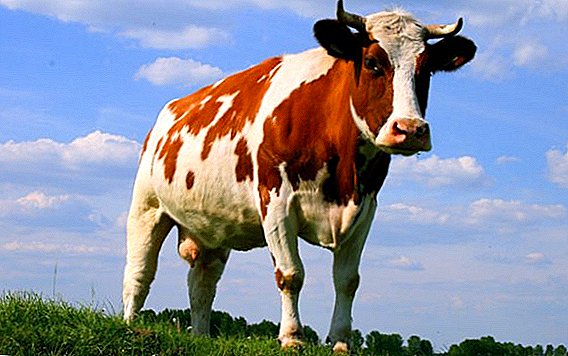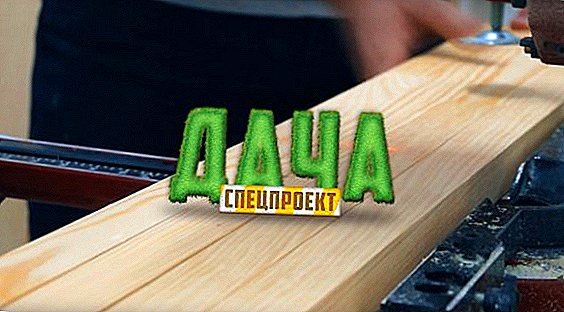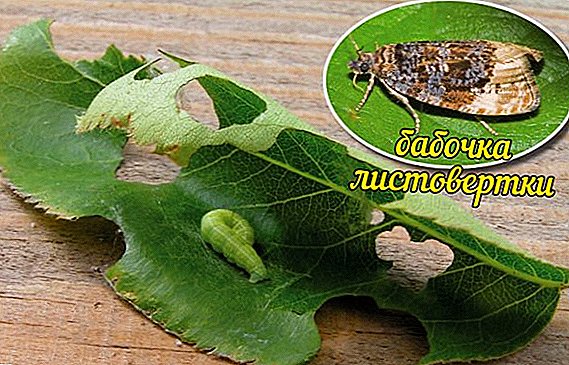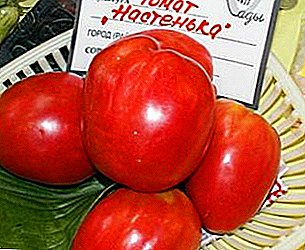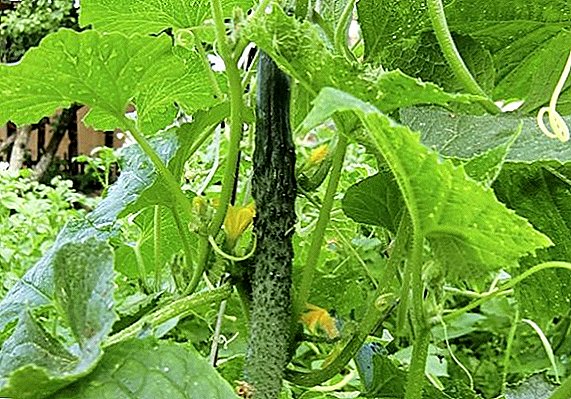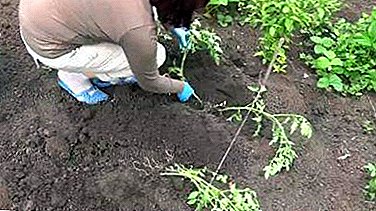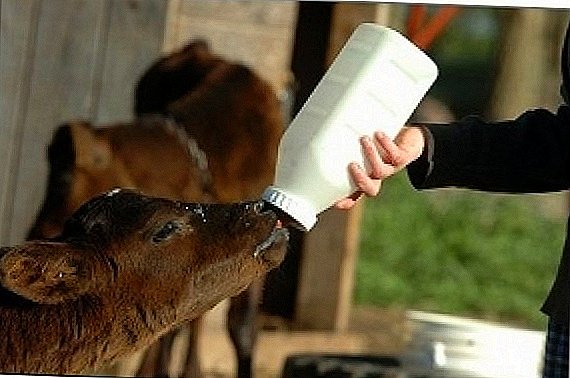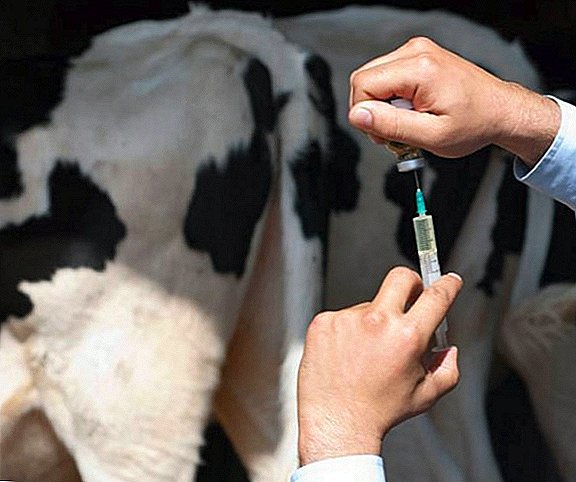 Industrial types of livestock are sick quite often - the crowdedness and mass content of animals lead to the fact that a variety of infections spread rapidly among the entire population. As a preventive measure, animals need periodic vaccination. To do this, each cattle farmer must be able to use a syringe, knowing exactly where and how to prick.
Industrial types of livestock are sick quite often - the crowdedness and mass content of animals lead to the fact that a variety of infections spread rapidly among the entire population. As a preventive measure, animals need periodic vaccination. To do this, each cattle farmer must be able to use a syringe, knowing exactly where and how to prick.
Where to prick injections to cows and calves
In modern veterinary medicine, there are several ways of administering drugs by injection - subcutaneously, intramuscularly, intravenously and nasally.
Did you know? The first prototype of the syringe was invented about 2500 years ago by the famous ancient Greek physician Hippocrates. The device was a hollow tube, at the end of which was installed a reservoir for fluid, made from the bladder of a pig.In each case, it is necessary to choose certain zones on the body of the animal:
- Medications are injected subcutaneously to adult animals just above the jugular trough, in the middle third of the neck, in the region of the decompression or behind the scapula. Calves subcutaneous injections injected into the middle third of the neck or into the inner part of the thigh.
- Intramuscular injections to cattle are made in large muscles - this place should be as far as possible away from large veins, complex nerve nodes and tendons. The most suitable areas for this are: the humeral part of the pectoral muscle, the triceps muscle of the shoulder, the upper part of the neck, and the gluteus muscle between the beginning of the tail and the femur (pelvis).
- Intravenous injections of cattle are performed in the jugular vein. The most suitable for this area is considered to be the boundary between the upper and middle third of the neck.
- The nasal method involves injecting drugs directly into the nasal cavity.

How to make a shot of a cow
Despite the seeming simplicity of the process, it is quite difficult to inject a cow. This will require not only a certain skill, but also a firm hand, as well as accuracy - only in this case you will be able to enter the drug safely for you and for the animal.
Intramuscularly
Procedure for intramuscular injection:
- Fix the cow's body. For this, it is immobilized with the help of special restraining machines. In their absence, the cow is tied to a stall or other supports — the animal's body is tightly fastened by the horns, the chest and hip part with the help of a universal lasso-type loop.
- Determine the injection site. For intramuscular injections, the neck region is the most preferable, since in this case it is possible to completely avoid any destruction of muscle tissue that impairs the quality of the meat.
- Prepare a syringe and type in the required amount of the drug.
- Feel the densest side of the muscle and aim at it - this will help prevent the introduction of the drug outside the required area.
- Hit the animal several times with the fist into the area of the injection and sharply insert the needle into the body.
- After the animal calms down and the pain shock passes, inject the drug and then remove the syringe.
Important! When performing this procedure, avoid getting the needle outside the muscle. This can lead to damage to the blood vessels, which can be fatal to the animal.
- Massage the area of the injection - this will help relieve pain from the procedure.
- Release the animal to freedom.
Intravenously
The main stages of intravenous injection:
- Fix the cow's body, as in the previous case.
- Determine the place of injection - for this you need to grope on any body of the jugular vein on the body. The injection of the vein itself should not be carried out, since it is permissible only under particularly sterile conditions.
- Prepare a syringe and type in the required amount of the drug.
- With light and smooth movements, insert the needle into the vessel at an angle of 45 °, and then slowly introduce the drug into the body. Hurrying with the introduction of the drug is not worth it, since an excessively active fluid intake can cause a negative reaction of the body.
- Pull the syringe out of the vein and release the animal to freedom.
 a - clamping the vessel with a finger; b - clamping the vessel with a harness
a - clamping the vessel with a finger; b - clamping the vessel with a harnessSubcutaneously
Actions for subcutaneous injection:
- Fix the cow's body.
- Determine the place of injection - the most suitable for subcutaneous injections are the areas near the shoulder or on the withers.
- Prepare a syringe and type in the required amount of the drug.
- Proceed to the injection - for this you need to pinch the skin slightly with one hand and take a syringe with the second.
- Insert the needle of the syringe into the skin, 1-2 cm below the point of contact. The injection should be carried out smoothly, in order to avoid puncture through the skin.
- Remove the needle from the body, and then wipe the injection area with massaging movements to prevent fluid from escaping.
Important! When injecting drugs into an animal's organism, it is imperative to ensure that there is no free air in the syringe, otherwise a cow may develop an air embolism.
- Release the animal to freedom.

Nasal (inject into the nose)
The main steps for nasal injections:
- Fix the cow's body.
- Fix her head firmly with a leash so that the cow cannot move it.
- Prepare a special syringe with a plastic tip and type in the required amount of the drug.
- Insert the tip into one of the nostrils and sharply inject the drug.
- Pull out the plastic tip and repeat the procedure with the next nostril.
- Untie the animal and release it to freedom.
We advise you to read about what drugs are needed for the treatment of cattle.
Useful tips
Often, farmers manage to properly inject a cow, even with a lack of specialized knowledge and skills. But in order to enhance the effect of the procedure and avoid negative consequences for the animal’s body, The following recommendations should be followed from experienced veterinarians:
- When a cow is immobilized, it is imperative to provide for a firm fixation of its head - this will help minimize possible injuries, both for livestock and for staff;
- animals should be given any medications only after consulting with an experienced veterinarian;
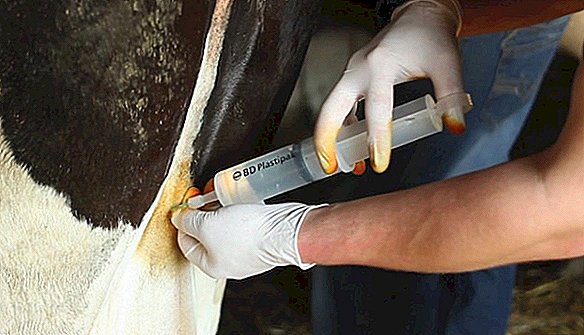
- the injection should be done quietly and calmly, this will help reduce the overall stress of the procedure;
- during the injection you need to be quiet, as excessive noise can cause aggression of the animal;
- all drugs should be kept in strict accordance with the manufacturer’s recommendations, otherwise their effectiveness will be reduced by several times;
- syringes and needles to use more than once is strictly prohibited;
- for the procedure, only serviceable, complete and sterile syringes, as well as other medical accessories, should be used;
- use syringes in accordance with the dose of the drug - the smaller the dose, the less you need to choose a syringe;
- expired drugs are strictly prohibited for livestock;
Did you know? The first disposable syringes were invented in the United States in 1954 by the company Becton, Dickinson and Company, but their mass distribution began only in the mid-1980s.
- prick different drugs with the same syringe is prohibited;
- injections should be done outside the pen, otherwise in a confined space an enraged animal can harm you;
- preparations for intravenous administration should always be preheated to the body temperature of the animal - this will help minimize the shock therapy for his body;
- Always watch out for animals - this will help avoid injuries, as well as unforeseen situations.
 Injection skills are one of the main skills that every farmer must possess. They provide an opportunity to independently monitor the state of health of the livestock, as well as successfully fight infections.
Injection skills are one of the main skills that every farmer must possess. They provide an opportunity to independently monitor the state of health of the livestock, as well as successfully fight infections.Learn more interesting facts about cows.
Often the procedure of injection is not difficult, but it is necessary to adhere to certain rules. Only in this case, the injection will be really safe and effective.



